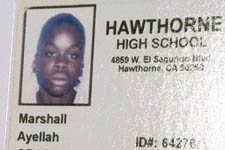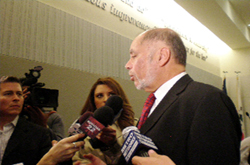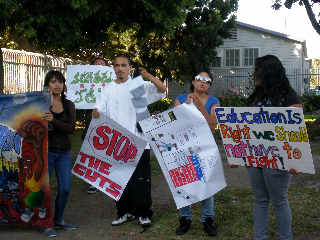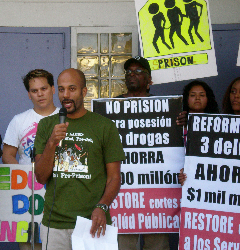 The Los Angeles Police Department announced their new focus on eight new women connected to the Grim Sleeper. Six were missing persons, one was an unsolved homicide case, and the eighth woman is unidentified.
The Los Angeles Police Department announced their new focus on eight new women connected to the Grim Sleeper. Six were missing persons, one was an unsolved homicide case, and the eighth woman is unidentified.
Lonnie Franklin Jr., a South Los Angeles resident, was arrested last July for the killing of 10 south Los Angeles women. The youngest was 14 years old, and the oldest victim was 36.
Since his arrest, police have collected evidence, including many photos, from Franklin’s home. Evidence led police to identify three missing persons who were at or near his home.
LAPD detective Dennis Kilcoyne said two photo I.D.s were found in Franklin’s home, including one of Ayellah Marshall. She disappeared in February of 2005 at 18 years old. She was a senior at Hawthorne High School.
Another I.D. found belonged to Rolenia Morris. It says she was from Las Vegas Nevada.
With more women being identified through evidence, Kilcoyne said he doesn’t believe “Grim Sleeper” is still an appropriate nickname.
“I think the more we find out, the more we’re going to fill in that gap,” said Kilcoyne.
Police still have photos to comb through and identify, and are asking the community to take a look at them. They hope those frozen in the photos won’t have to be added to the Grim Sleeper’s victims list.
Below is LAPD detective Dennis Kilcoyne talking about what his team has ahead of them.













 Seven residents of Los Angeles felt the same way and wanted to discuss the city’s new identity. Writers, politicians, professors, historians and lawyers gathered for a panel called “Thinking About Now in Los Angeles” on Thursday evening.
Seven residents of Los Angeles felt the same way and wanted to discuss the city’s new identity. Writers, politicians, professors, historians and lawyers gathered for a panel called “Thinking About Now in Los Angeles” on Thursday evening. 







